Best Soccer Exercises to Help Improve Your Speed & Power
Whether you're in a casual league or getting ready for your next competitive season, the best soccer exercises will get you ready and help keep you on the pitch longer while preventing injury.
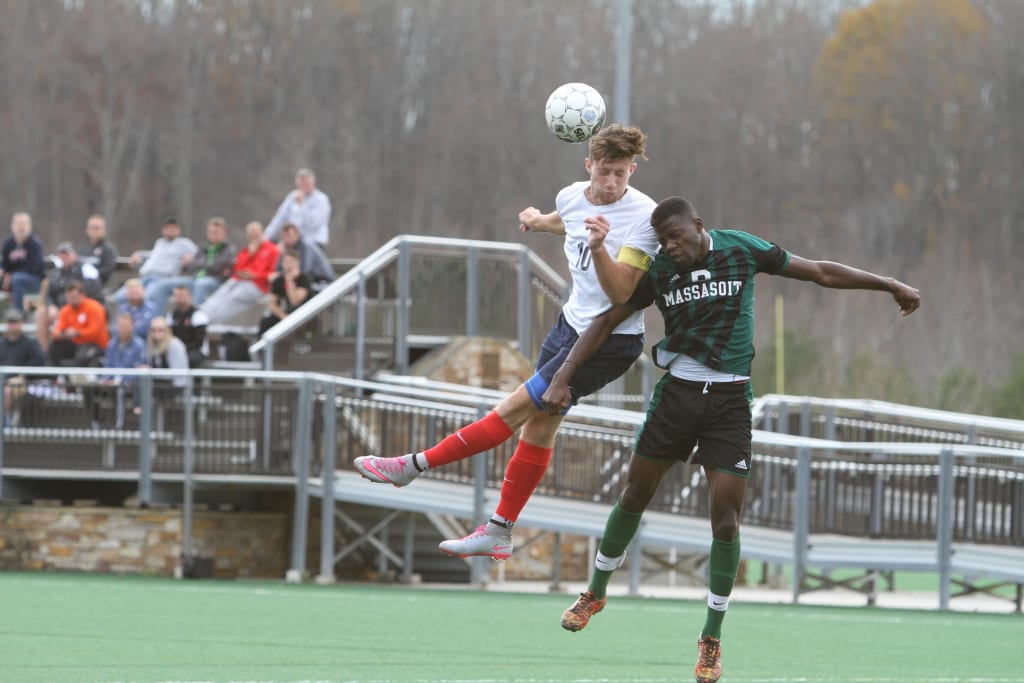
Since soccer incorporates so many different aspects of fitness such as strength, speed, and agility, the best soccer exercises will be ones that improve a few of these areas at once. From weight lifting to bodyweight exercises, calisthenics to running, there are exercises for everyone to help improve their ability on the pitch. All of the best soccer forwards have probably done all of these. But no matter what position you play, these 10 best soccer exercises will give you an edge before your next season.
Bodyweight Exercise: The Split Jump
How: With your feet at hip distance apart, take a large step forward with one foot and lower your body to the floor. You should aim for a 90 degree angle with both legs at this point. Quickly jump to switch feet and land in a bent knee lunge. The split jump is essentially quickly alternating between lunges.
Why you should include them: Split jumps are an excellent plyometric exercise that you can incorporate anywhere, at anytime—whether part of your normal workout at the gym or out in the field. They help develop muscular stability in your legs, work your core, and are excellent for your cardiovascular system.
Bodyweight Exercise: The Burpee
How: Start with your feet approximately shoulder width apart. From there, squat down and place your hands on the ground like you would for a push-up. From there, kick your feet back, do a push-up, hop back up on your feet, and jump into the air while bringing your hands above your head. To put it simply: first squat, then perform a push-up, and then squat-jump.
Why you should include them: Burpees are a calisthenic exercise, which means no equipment is needed—you can do them anytime, anywhere, with just your body-weight. For a simple bodyweight exercise, they are perfect for soccer players: they hit important aspects of conditioning like core strength, explosive power, and anaerobic endurance.
Circuit Training Exercises: Push-ups, Squats, Jumping Jacks, and Leg Raises
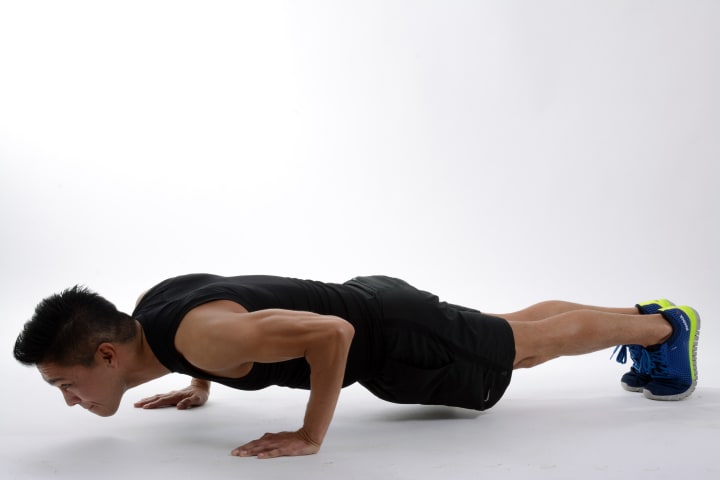
Photo by Keiji Yoshiki on Pexel
How: A circuit is where you perform each exercise continuously one after another until you take a rest and perform the circuit again. There are multiple ways to accomplish one: you can set up stations (such as doing 10 jumping jacks, running to the next station to do 10 squats, etc.) or you can use a deck of cards and have each color and number represent a certain amount of reps for a certain exercise. Perform these simple exercises one after another.
Why you should include them: Circuit training mimics game play on the field and challenges your body to quickly adapt to different exercises within a short period of time. In a game, you might sprint for a short period of time followed by fighting for the ball, back peddling, and then kicking. Circuit training will help you build core strength, improve conditioning, help with ball control, and score more goals. They're basically some of the best soccer warm ups out there.
Bodyweight Exercise: Planks
How: Place your hands directly under your shoulders as if you are about to do a push-up. Lay your forearms on the ground while keeping your body stiff, driving your toes into the ground. Look directly at the ground below to help keep your upper body straight. Consider doing this for multiple sets with a small amount of rest in-between, based on your current fitness level. For example, try three sets of planks where you hold each one for 30 seconds, with a 20 second break in-between. As you improve, you can hold each plank for longer, take a shorter rest period, or include more in your sets.
Why you should include them: Planks are one of the best ways to build core strength, and they are a bodyweight exercise that can be performed anywhere. With improved core strength, you will be able to fend off attackers or defenders better, pass more easily, and it will even help your scoring potential. If you want to do core exercises for soccer players, look no further thank a plank.
Weight Training: The Squat
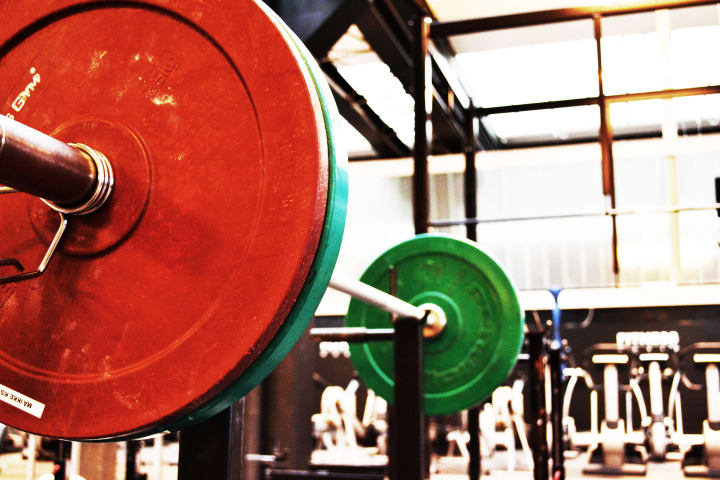
Photo by Jesper Aggergaard on Unsplash
How: Begin by keeping your feet about shoulder width apart and rest the bar on your shoulders. Keeping your chest and head up, lower your body down until your hips are below or parallel with your knees. Rise up and repeat. Squats are one of the most mechanically intensive exercises so be sure to practice and even have a trainer check your form before going too heavy.
Why you should include them: Squats are the quintessential exercise. Being a compound movement, they hit your entire body, but specifically your hips, quads, hamstrings, and calves. With the increased strength that is sure to come as a result of doing squats, you will be able to kick the ball harder and farther to score more goals, fight for the ball more efficiently in the air or on the ground, and improve your sprint speed and jump height. They are among the best soccer exercises to include in your training regimen.
Weight Training: Deadlifts
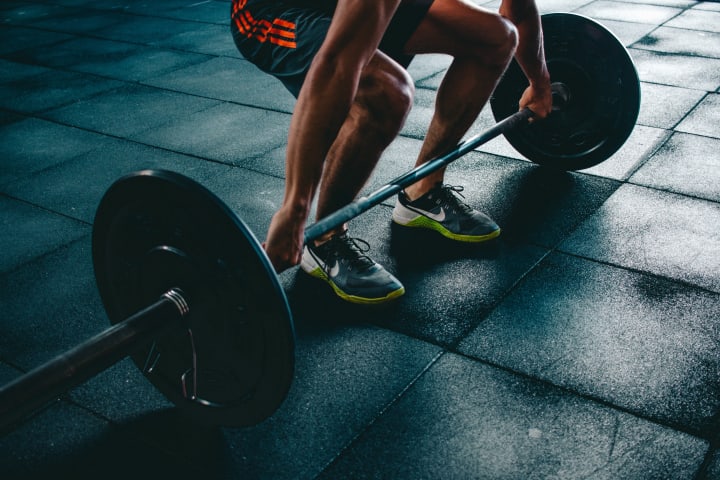
Photo by Victor Freitas on Unsplash
How: Like the squat, its imperative to perform a deadlift with proper form to prevent any sort of injury from occurring. First, start with the barbell on the floor. Pull it to your middle of your thighs while locking your hips and knees. Bend your knees and return the weight to the floor, and then repeat. Most importantly, keep a neutral back and do not round in order to prevent injury.
Why you should include them: The muscles that are used to perform the deadlift are used in a variety of soccer related movements such as a vertical jump to get a header or an explosive acceleration to chase down a ball. It has impacts in nearly every aspect of the game and is on par with the squat for being the overall most important weight training exercise to do for soccer.
Weight Training: Lunges
How: To perform a lunge correctly, start by standing tall with your shoulders back and core tight. Step forward with one leg while lowering your hips until your knees are bent at a 90 degree angle. Push back up and return to your original position while repeating with the opposite leg. As you improve, you can hold a dumbbell in each hand, adding weight to the exercise to increase its difficulty.
Why you should include them: Lunges are a staple for lower body exercises and help the body create stability and balance. They are perfect for increasing your speed and power, helping you create space from defenders. They are also a favorite exercise of Real Madrid’s Cristiano Ronaldo, as he has been seen featuring himself doing them on his Instagram several times.
Weight Training: Bench Press
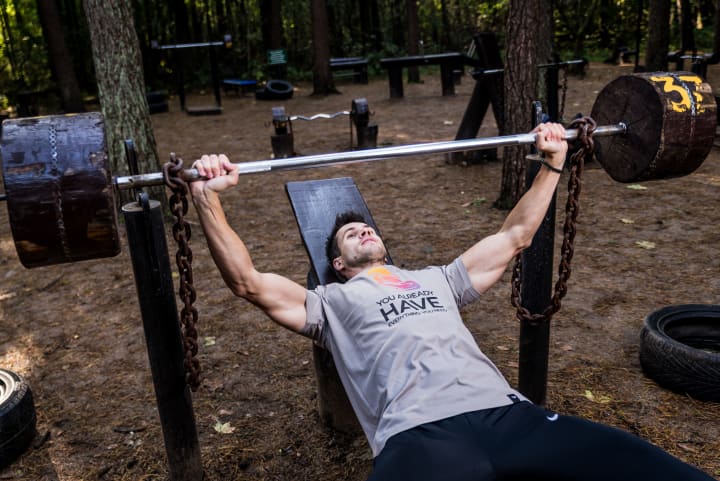
Photo by Frame Kings on Pexel
How: Lay down flat on the bench with the bar directly overhead. Keep your feet planted firmly on the ground and grab the bar about shoulder width apart (the wider you go the more you impact your chest, while more narrow grips will work your triceps). Lower the bar until it just about touches your chest and then raise it until your arms are straight again. Try not to flare your elbows.
Why you should include it: It is easy to overlook upper body strength when it comes to soccer. Whether you’re jumping for an air ball, running shoulder to shoulder with an opposing player, or are trying to get out of a situation where two defenders are on you, upper body strength will help you do so. The bench press can be performed in a variety of ways to work your upper body differently, such as an incline or decline bench, or with varying grip widths. It is one of the most efficient compound movements to improve your upper body power.
Running: Running Stairs and Hill Sprints
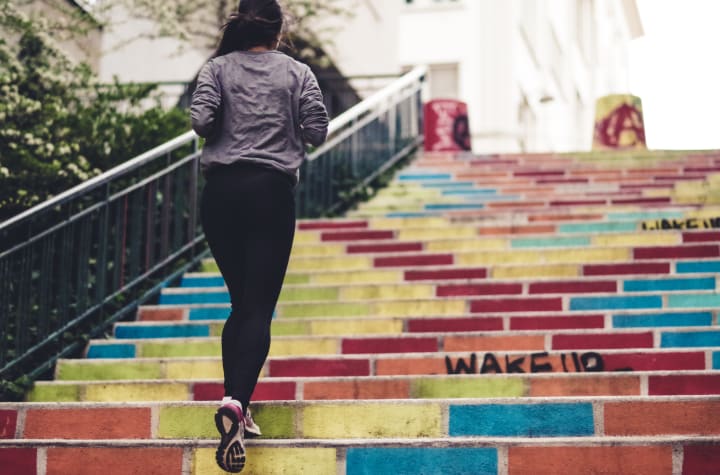
Photo by Ev on Unsplash
How: Find a local set of stairs or hill and begin at the bottom, running up quickly before jogging back down. Repeat for 10 times before taking a break. As your endurance and conditioning becomes better each session, begin to increase the amount of reps you do to 12, 15, or 20.
Why you should include these: Running stairs or sprinting hills are both exercises that increase your maximum V02 Max, or your maximum oxygen intake. It is one of the best soccer exercises to increase your foot speed, quickness, and conditioning, allowing you to outmaneuver defenders on the pitch and score more goals.
Running: Varied Agility Drills
How: Find a place with plenty of space, ideally an open field that is marked. If not, you can bring cones or other objects to mark distances, even as simple as your water bottle and ball. With a distance of roughly 20 yards apart, consider doing the following:
- Run backwards to one cone, then forward to your starting location.
- Quick sideways steps until you reach the cone and then go back to your starting location, facing the same way.
- Bear crawl there and then jog back.
- Alternate between jogging, running, and sprinting between cones.
Why you should include these: Simple agility drills are a great way to mimic the type of play that you will experience in a soccer game. They will build speed and work your cardiovascular endurance so that you will be able to stay on the pitch longer. Try doing these for 20 minute sessions, alternating intensity and keeping only resting a few times as needed.
The best soccer exercises will improve all areas of your fitness.
Soccer is sport that places a variety of demands on your body throughout the course of the game. A well-rounded fitness regimen that includes exercises to increase strength, power, quickness, speed, and endurance is needed to ensure success throughout the course of a game and adapt to any situation that might arise. Whether you're sprinting down the sideline to chase after the ball or need to make a crisp, powerful pass to a teammate across the field, these are among the best soccer exercises to work into your exercise routine.
About the Creator
Dave Schneider
Former high school teacher and baseball coach.
Enjoyed the story? Support the Creator.
Subscribe for free to receive all their stories in your feed. You could also pledge your support or give them a one-off tip, letting them know you appreciate their work.






Comments
There are no comments for this story
Be the first to respond and start the conversation.